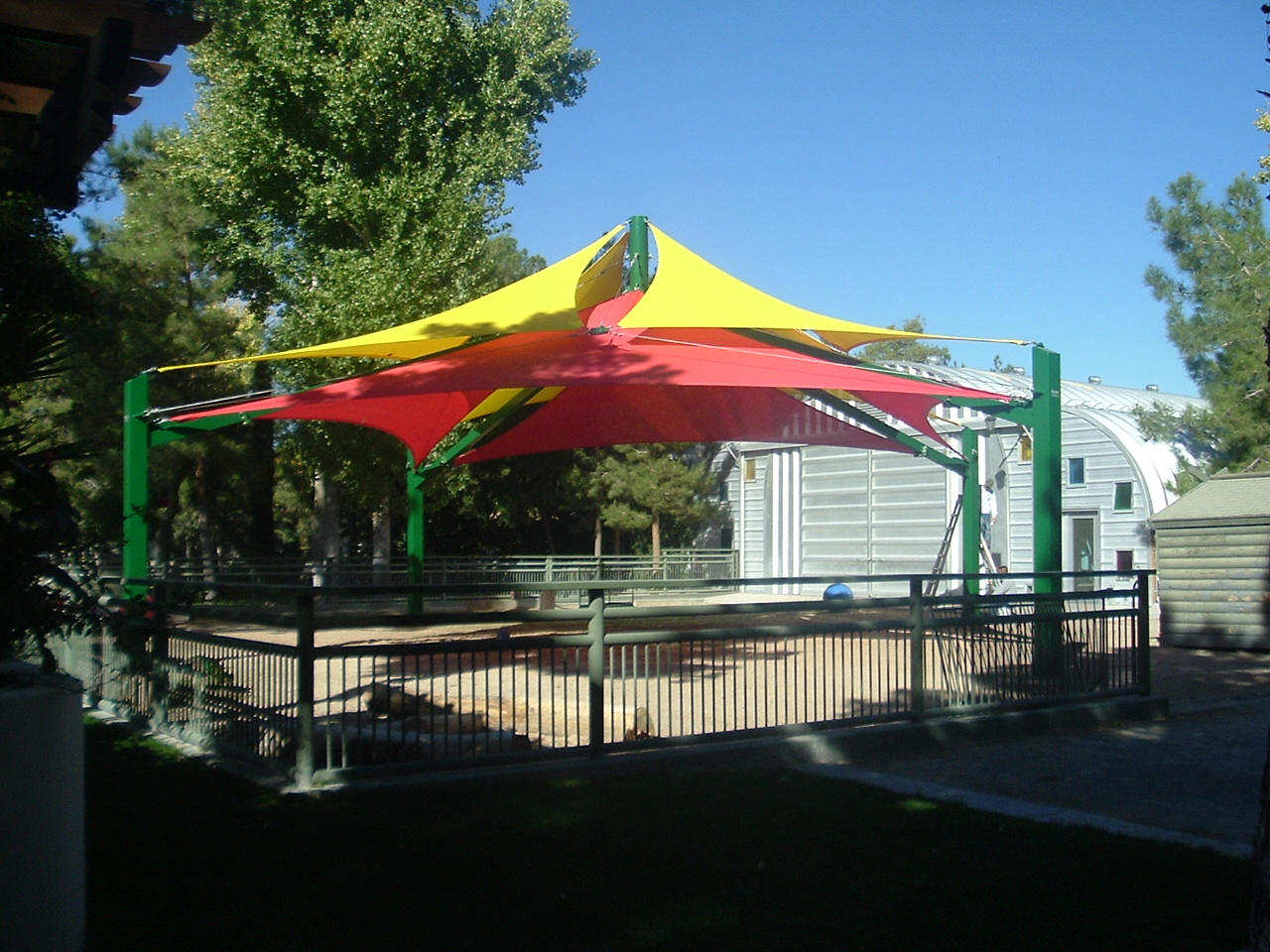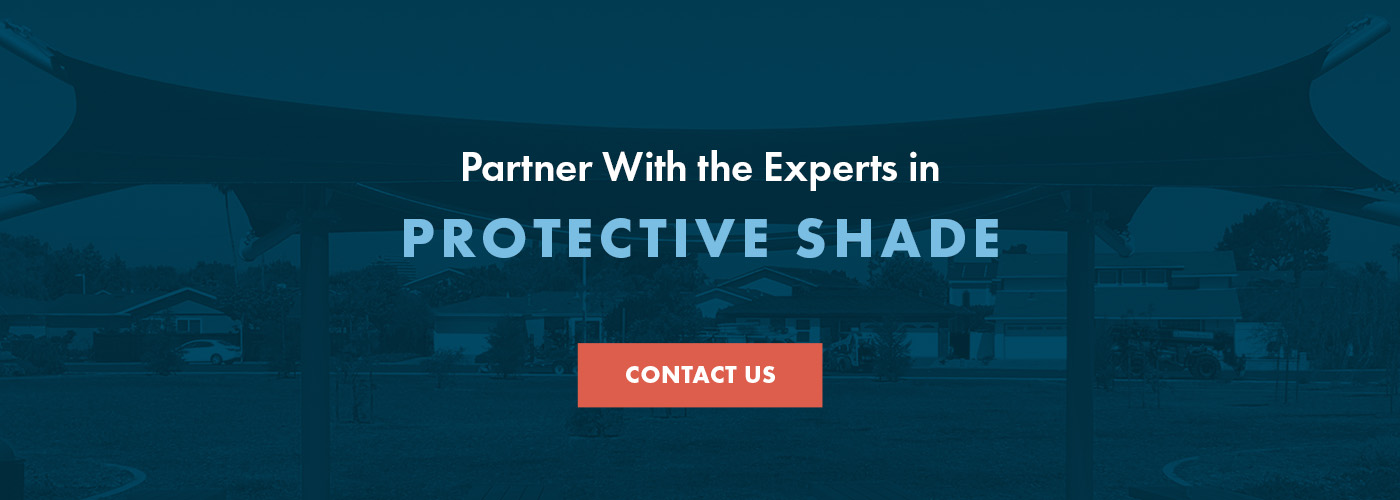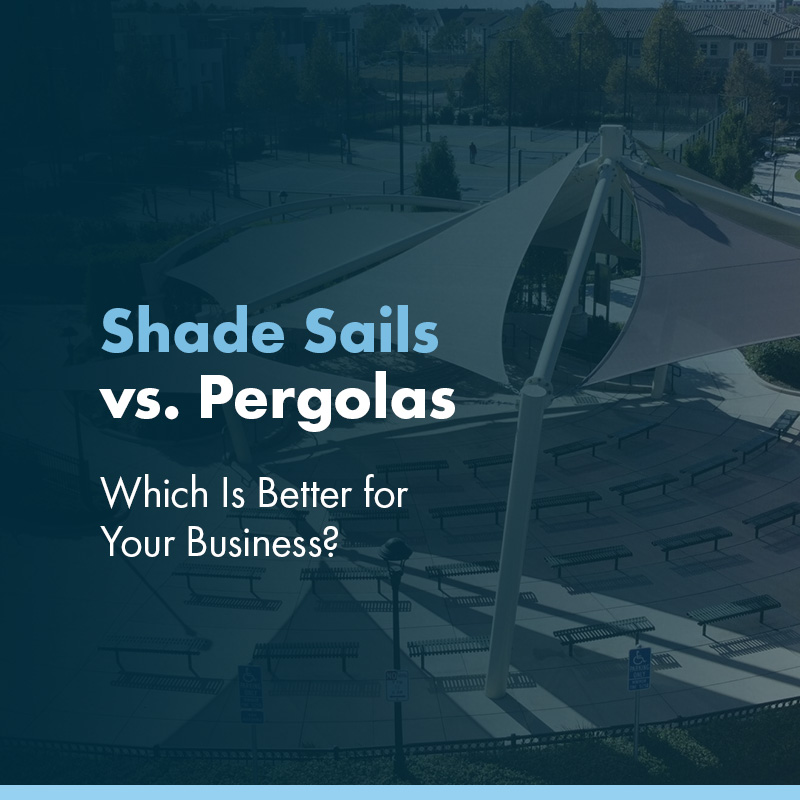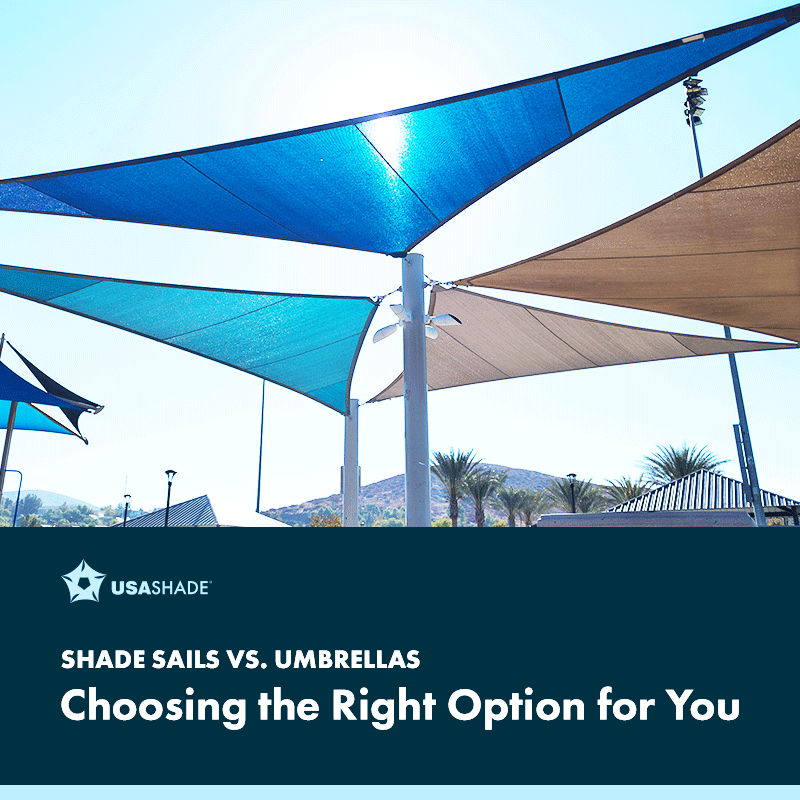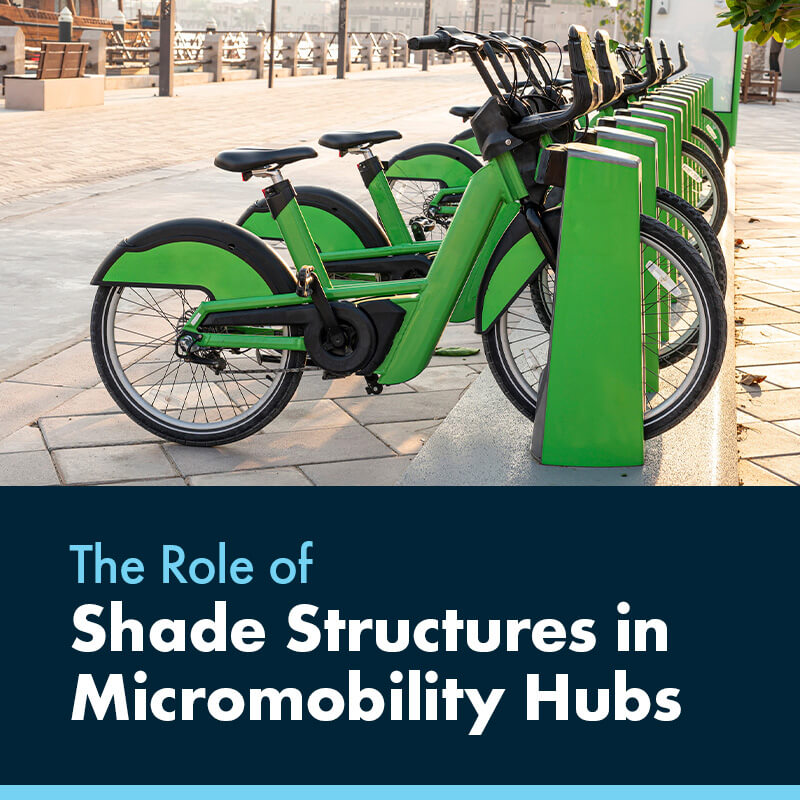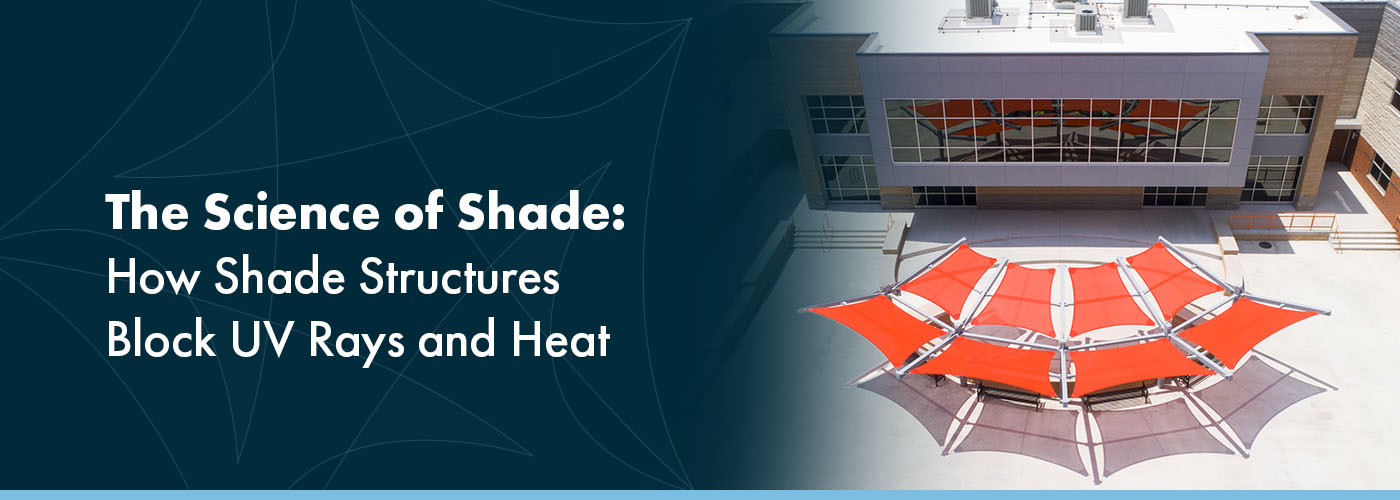
Shade structures protect people when enjoying playgrounds, parks, college campuses and urban areas. These structures keep temperatures cool and offer cover from excess heat and UV exposure. They can also help equipment stay in good condition for longer, since they keep benches, playground equipment and other items out of direct sunlight.
Whether you’re building an outdoor playground, covering a picnic area or offering shade to staff members outside the workplace, shade structures are an essential part of making your space comfortable. Learn more about the science behind shade structures and how they can add value to your property.
The Science Behind Shade and Heat Reduction
Although getting sun exposure has many health benefits, it can cause damage to people’s skin. The sun can also degrade plastic, wood and other construction materials.
In cities, excess concrete and asphalt stop natural cooling and can make outdoor areas much too hot. This is known as the heat island effect, and it can cause outdoor fixtures to degrade more quickly due to heat exposure. Materials like wood, plastic, lithium-ion batteries and paint can all break down from being overheated every day.
The sun emits both light that we can see and light that we can’t see. Some of this invisible light includes ultraviolet (UV) radiation, a high-energy light that causes a chemical reaction that damages and degrades materials. UV light also causes sunburn and skin cancer.
Shade structures are an effective solution that allows people to enjoy the sun’s warmth without too much exposure to its damaging effects. The scientific benefits of shade go far beyond adding a cool breeze to your project — although that can be incredibly valuable and attract more people, too!
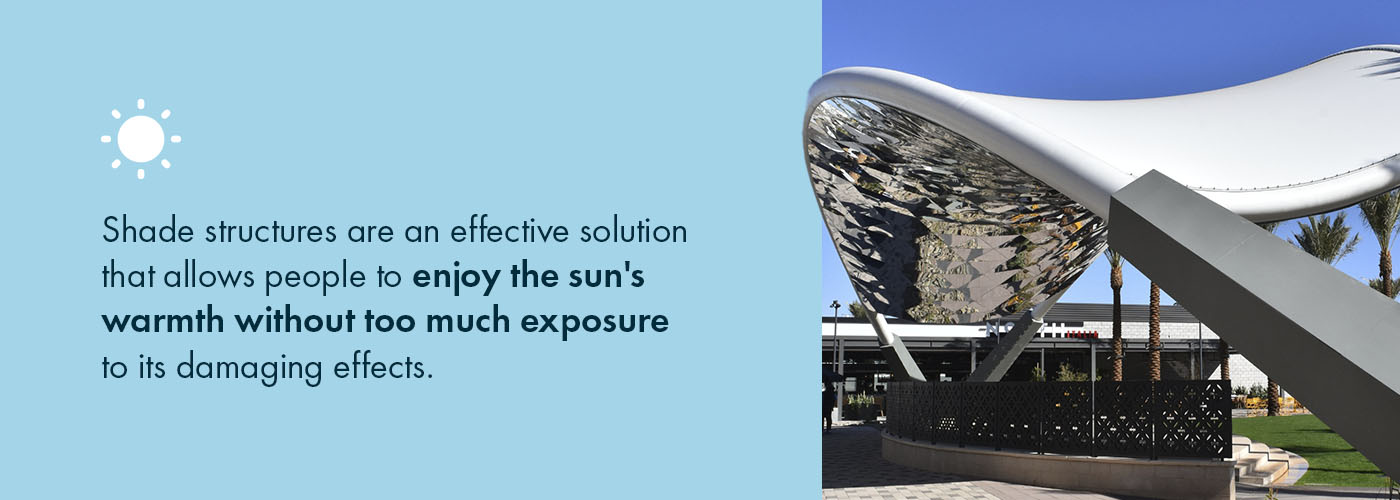
How Shade Blocks UV Rays
Light is a spectrum of electromagnetic radiation, and our eyes are only equipped to see part of that spectrum, called visible light. UV radiation is invisible to human eyes, with a shorter wavelength and higher frequency than visible light.
There are three kinds of UV radiation — UVA, UVB and UVC rays. Most UVB and UVC radiation is blocked by the Earth’s atmosphere and never reaches the surface, where it can affect people. That’s a good thing, since these rays have a shorter wavelength and can be especially harmful. When not blocked, UVB rays cause damage to people and objects.
Most UVA rays make it through Earth’s atmosphere. Although this type of UV radiation is the least harmful, it still causes noticeable damage. UVA and UVB together are primarily responsible for causing sunburn and aging materials like paint and plastic. Exposure to these rays over time can lead to severe effects.
Although it may seem counterintuitive, UV radiation isn’t only present on sunny, warm days. UV radiation can still be high on cloudy days, with rays breaking through cloud cover to hit the Earth’s surface. Protecting people and fixtures like playground equipment from UV rays is equally important when the sun isn’t out, especially since fewer people will seek sun protection during this time.
Combat UV Rays With Shade
While shade can help reduce the impact of UV rays, not all shade is equally helpful. For example, UV rays can pass through some fabrics, and these rays can damage vulnerable fabrics, so they have to be replaced often. It’s important to choose fabric that’s been designed to withstand UV radiation for effective shade structures.
Fabrics are rated according to the Ultraviolet Protection Factor (UPF), a number scale that conveys how much UV radiation will penetrate the fabric. UPF ratings of 30 and up are very good, while a rating of 50 or higher is considered excellent. When you’re designing a shade structure, it’s essential to choose fabric with a high UPF rating that can offer protection from harmful UV rays.
How Shade Blocks Heat
In addition to UV rays, the sun can create intense heat outside. Temperatures tend to build to a high in the mid-to-late afternoon, although this can vary by location. Without any shade, people are less likely to use outdoor areas, and equipment will degrade faster. Installing a shade structure will make your outdoor area more usable and increase its longevity.
Many materials respond poorly to being overheated. Plastic material doesn’t last as long when left in direct sunlight, since the heat and UV rays can break down its color and strength. While heat can damage some fixtures, it can overheat others so that they’re difficult for people to use. For example, plastic and metal playgrounds become extremely hot in the sun.
If there’s concrete or asphalt underfoot, a shade structure is essential to prevent those surfaces from becoming intolerable over the day. While a shade structure can’t change the climate where your business is located, it can offer relief and stop the sun from directly hitting materials, like black asphalt, that store heat.
At a certain temperature, people won’t want to spend time outside. Extend the usefulness of your company’s outdoor space by adding shade structures that keep fixtures cool and give people relief from direct sunlight. Shade structures can significantly reduce outdoor temperatures and help prevent related health issues.
Choose Fabrics That Reduce Heat
The kind of fabric you choose for a shade structure can impact how well it protects people from heat. Porous materials allow more air to pass through, keeping it cooler underneath a structure. This is known as convective cooling — when heat transfers through moving air, without a barrier keeping hot air trapped underneath.
When shade structures are well-designed, they physically block heat from above while allowing heat from below to move up and out of the covered area. You can combine a shade structure with fans and water features to keep hot air moving and cool circulating air. However, shade structures offer significant relief on their own for both people and fixtures.
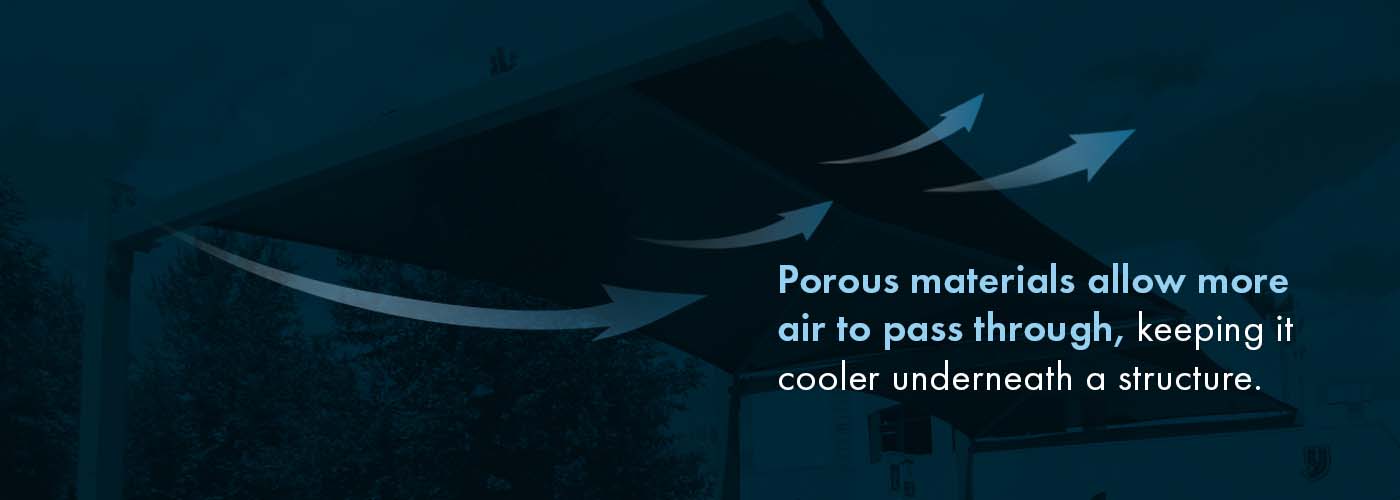
Understanding the Anatomy of a Shade Structure
Commercial shade structures offer effective protection against heat and UV radiation when they’re designed by experts. Every project requires a different solution, depending on a company’s goals, budget and environmental needs. The three key considerations when choosing a shade structure are the fabric, design and environment.
High-Performance Shade Fabric
Because the fabric used in a shade structure blocks the sun, it receives the full impact of the sun’s damaging rays. Shade structure fabric must be designed to last, withstanding heat and UV rays so you get a high return on your project investment. One of the best commercial-grade fabrics for this purpose is high-density polyethylene (HDPE).
This fabric is made from petroleum and has a high resistance to heat and UV rays. It’s highly durable, water-resistant and considered a low-leaching plastic, especially when treated to be UV-resistant. Unlike many other materials, HDPE doesn’t rust, rot or crack when exposed to the sun for a long period of time.
At USA SHADE, we offer a range of commercial-grade fabrics for your custom shade structure. Our options include Shadesure™ HDPE, Teflon™-coated PVC and Colourshade FR. Depending on your goals, our Shade Consultants can help you find a fabric that offers UV protection, excellent shade coverage, water resistance and even flame-retardant features.
Engineered Structural Design
The structural design of a shade structure impacts how effectively it blocks heat and UV rays. A structure’s geometry includes its height, orientation and angles. While some shade structures are built with a single fabric component, others may have several supports and fabric covers. These structures provide architectural interest and beauty to a location while also shading it from the heat of the sun.
An experienced structural designer can create a custom shade structure that fulfills both its practical function and is fun for people to interact with. Structural designs can vary from mimicking flower shapes on a playground to installing a simple cover for an outdoor restaurant or community space. The science behind shade structures means your company can cool outdoor spaces with a wide range of custom-engineered solutions.
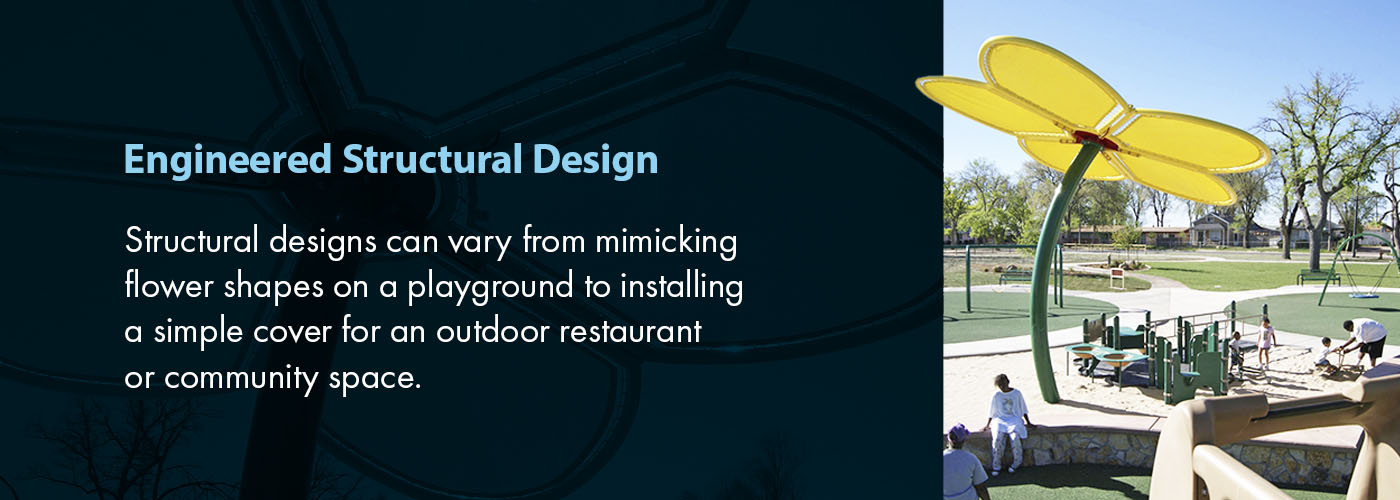
Location Awareness
Because every environment is different, every shade structure can be, too. Factors like annual rainfall, temperature and weather will impact what materials your company chooses to build with and how to successfully block UV radiation and heat in your location.
The direction your facility faces also matters, since nearby buildings can block the sun or leave your space exposed. As the sun moves during the day and through seasonal changes, your shade structure needs to block the worst of its heat and UV exposure. Understanding your location is key to building a shade structure that offers an effective shade solution.
The Top Benefits of Engineered Shade
Shade structures expand your usable space and increase engagement. For example, a playground with shade structures appeals to more families during the hottest months of the year. Providing shade at a corporate or downtown setting allows more adults to enjoy the outdoors during their lunch breaks or meetings.
Three measurable benefits of shade structures include:
Health and Safety
Adding shade structures can help protect people from sunburn and heat stroke. Cover from direct sunlight is especially helpful in hot climates, where the ground warms up until it reaches an intense peak of heat in the late afternoon. In cities, the amount of asphalt and concrete reduces natural cooling, exacerbating this effect.
Shade structures allow people to spend more time outside. Without access to these structures, many people will choose to remain inside, or they’ll frequent other locations that offer outdoor shade. Shade structures are an important safety investment for community centers, restaurants, hotels, playgrounds and other businesses with outdoor spaces.
Comfort and Usability
Many outdoor areas become unusable in the summer due to the heat from direct sunlight. Benches become too hot to sit on, EV charging equipment breaks down faster and white sidewalks become blinding. Being outside in the summer is often uncomfortable, discouraging people from using outdoor spaces.
When you invest in shade structures for your business or outdoor community space, more people will be likely to use these spaces. Aside from safety, shade structures provide comfort that can significantly reduce outdoor temperatures, making it more fun to be outside. Prioritizing people’s comfort may be the feature that sets your facility apart from other options in your area.
Consider the difference a shaded area makes for parents watching their children at a playground — they can relax and enjoy the experience without the discomfort of direct sunlight. In urban environments, shade structures transform scorching sidewalks into pleasant pedestrian zones, encouraging people to walk and explore. For businesses, providing shaded patios or seating areas creates a welcoming atmosphere that attracts customers and urges them to linger longer.
Shade structures make outdoor spaces more inviting and functional for everyone, no matter where they’re placed.
Asset Protection
Shade structures shield people, but they also protect fixtures like playgrounds, outdoor furniture and playground equipment from sun damage. Many materials can be damaged by prolonged sun exposure. Shading outdoor equipment can extend its useful life, keeping materials strong and protecting colors from fading.
Commercial shade structures are especially important if you see your company’s outdoor area as a long-term investment. If you’ve installed outdoor seating, covering it is the best way to protect that furniture from inclement weather and the damage of sitting in the sun day after day. Asset protection is an often-overlooked benefit of shade structures.
Partner With the Experts in Protective Shade
At USA SHADE, our experts have mastered the science of shade to create unique shade structures that improve outdoor facilities. If you’re looking for a shade structure solution that benefits your business, we have the experience you’re looking for. Our team understands the technical side of effective shade and can help your company achieve its goals with expert design and engineering skills.
We only use high-quality fabrics and support materials that stand the test of time. When you work with us, we can help you design and construct a shade structure that’s practical and aesthetically pleasing. Every shade structure we make is custom-designed to fit your project.
Contact USA SHADE today to request a quote and learn more!


